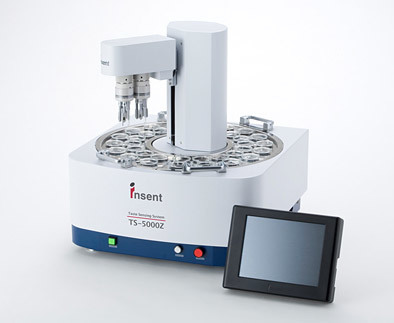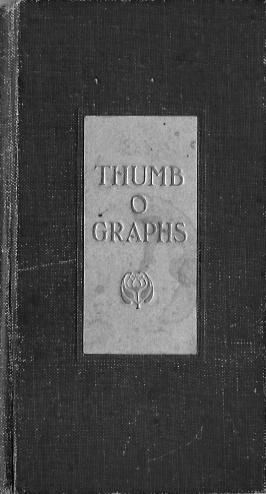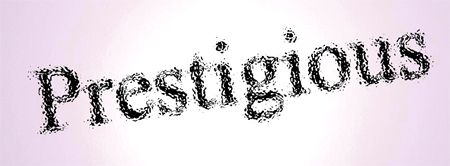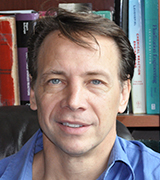Marc Abrahams's Blog, page 158
February 4, 2019
Combining e-noses, e-tongues and e-eyes (study)
 You might have come across a sensor device called an ‘Electronic Noseâ€
You might have come across a sensor device called an ‘Electronic Noseâ€ (also known as an e-nose). ‘Electronic Tonguesâ€
(also known as an e-nose). ‘Electronic Tonguesâ€ (e-tongues) are also available. And of course there are various types of ‘Electronic Eyesâ€
(e-tongues) are also available. And of course there are various types of ‘Electronic Eyesâ€ (e-eyes). For a rare example of an academic paper which describes the application of all three at the same time, see:
(e-eyes). For a rare example of an academic paper which describes the application of all three at the same time, see:
‘Combination of an e-nose, an e-tongue and an e-eye for the characterisation of olive oils with different degree of bitterness‘ in Analytica Chimica Acta, Volume 663, Issue 1, 17 March 2010, Pages 91-97.
Note : As yet, there are very few, if any, academic papers covering applications of e-ears. If we hear about any, we will of course let our readers know.
The photo : shows the TS-5000Z e-tongue from Intelligent Sensor Technology, Inc. (not used in the study).

January 31, 2019
Recovering Fire-Gazing as a Moving-Image Technology (study)
If you thought that animation technology began with the invention of the magic lantern in the 17th century or even, possibly, with flipbooks in the 15th – then think again.
A 2017 paper from Anne Sullivan (University of California Riverside) suggests that itâ€ s been around for many thousands of years – in the form of ‘Fire-Gazingâ€
s been around for many thousands of years – in the form of ‘Fire-Gazingâ€ .
.
“Fire-gazing is a form of flame-based reverie that typically involves a solitary viewer who perceives animated, moving images dissolving into and out of view in a wood or coal fire. When fire-gazing, the viewer may perceive arbitrary pictures, fantastic landscapes, or more familiar forms, such as the faces of friends and family.â€
See: Sullivan, A., 2017. ‘Animating Flames: Recovering Fire-Gazing as a Moving-Image Technologyâ€ in 19: Interdisciplinary Studies in the Long Nineteenth Century, (25)
in 19: Interdisciplinary Studies in the Long Nineteenth Century, (25)

January 30, 2019
Thumbographs
 Thumbographs are little books that people in England used, in the early 1900s, to collect thumbprints from friends, from people they admired, and from anyone else whose thumbprints they wanted to collect.
Thumbographs are little books that people in England used, in the early 1900s, to collect thumbprints from friends, from people they admired, and from anyone else whose thumbprints they wanted to collect.
Thumbographs play a role in Austin Freeman’s detective novel The Red Thumb Mark, which introduced the world to Freeman’s fictional detective/physician/lawyer John Thorndyke. Here is a passage from that novel:
“Is the ‘Thumbograph’ in your bag?” interrupted Miss Gibson, in response to this mute appeal.
“Of course it is, my dear Juliet,” replied the elder lady. “You saw me put it in yourself. What an odd girl you are. Did you think I should have taken it out and put it somewhere else? Not that these handbags are really very secure, you know, although I daresay they are safer than pockets, especially now that it is the fashion to have the pocket at the back. Still, I have often thought how easy it would be for a thief or a pickpocket or some other dreadful creature of that kind, don’t you know, to make a snatch and–in fact, the thing has actually happened. Why, I knew a lady–Mrs. Moggridge, you know, Juliet–no, it wasn’t Mrs. Moggridge, that was another affair, it was Mrs.–Mrs.–dear me, how silly of me!–now, what was her name? Can’t you help me, Juliet? You must surely remember the woman. She used to visit a good deal at the Hawley-Johnsons’–I think it was the Hawley-Johnsons’, or else it was those people, you know–”
“Hadn’t you better give Dr. Thorndyke the ‘Thumbograph’?” interrupted Miss Gibson.
The World Rugby Museum has an online exhibition of some of the thumb prints of then-famous rugby players.

January 29, 2019
What Does Guy Standing Stand For, and Where?
Professor Guy Standing stands and sits at SOAS University of London, where he develops studies in and for the Department of Development Studies.
Here is a photo of Guy Standing standing:

January 28, 2019
The Lure of Virtual Donuts (study)
“There appears to be a lack of research on the influence of virtual foods in IVEs [immersive virtual environments] on human satiation.â€
Prompting a joint research project from Stanford University (US) and Wee Kim Wee School of Communication and Information Nanyang Technological University (Singapore) to cater for this academic lacuna with a virtual donut [ thatâ€ s doughnut UK ].
s doughnut UK ].
Their experiments, which employed, amongst other things, a cotton bud dipped in chocolate-donut scented aromatic oil and a fake rubber donut, were able to demonstrate that :
“ […] participants in the touch and scent present conditions ate signiï¬cantly fewer donuts than those who were not exposed to these cues. However, we are cautious in interpreting these results, since the main ï¬nding of donuts eaten was found only when outliers were excluded. Whether the people who ate all the donuts did so because they were extremely hungry, or because donuts are their favorite food, is unclear.â€
See: ‘Exploring the Influence of Haptic and Olfactory Cues of a Virtual Donut on Satiation and Eating Behaviorâ€ in the journal Presence, Vol. 26, No. 3, Summer 2017, 337–354
in the journal Presence, Vol. 26, No. 3, Summer 2017, 337–354

January 25, 2019
The prevalence of prestigious
When you read news reports about science or medicine, you can amuse yourself by noticing how often the word “prestigious” crops up.

You might notice which news organizations make frequent use of the word. You might notice which science-related or medical-related institutions (or whatever) are called “prestigious.”
You might ask yourself which of those news reports use the word because it gives information, and which use the word because it fills space and seems, well, prestigious.

January 24, 2019
Statistics – Missing data can sometimes be ignored, and sometimes not (study)
 When statisticians are confronted with sets of data, they occasionally find there are data missing. This phenomenon has been given the name ‘Missingness’.
When statisticians are confronted with sets of data, they occasionally find there are data missing. This phenomenon has been given the name ‘Missingness’.
Sometimes, a decision is taken that these missing data can be ignored, in which case they are classed as ‘Ignorable Missingness’.
But on occasion, some missing data just can’t be ignored. In this case, it’s called ‘Non-Ignorable Missingness’.
For an example of how these two concepts might be applied in practice, see : ‘Maximum likelihood estimation of bivariate logistic models for incomplete responses with indicators of ignorable and non‐ignorable missingness’ in Journal of the Royal Statistical Society. Series C (Applied Statistics), Volume 51, Issue 3.

Statistics – Missing data can sometimes be ignored, and sometimes not (study)
 When statisticians are confronted with sets of data, they occasionally find there are data missing. This phenomenon has been given the name ‘Missingnessâ€
When statisticians are confronted with sets of data, they occasionally find there are data missing. This phenomenon has been given the name ‘Missingnessâ€ .
.
Sometimes, a decision is taken that these missing data can be ignored, in which case they are classed as ‘Ignorable Missingnessâ€ .
.
But on occasion, some missing data just canâ€ t be ignored. In this case, itâ€
t be ignored. In this case, itâ€ s called ‘Non-Ignorable Missingnessâ€
s called ‘Non-Ignorable Missingnessâ€ .
.
For an example of how these two concepts might be applied in practice, see : ‘Maximum likelihood estimation of bivariate logistic models for incomplete responses with indicators of ignorable and nonâ€ignorable missingnessâ€ in Journal of the Royal Statistical Society. Series C (Applied Statistics), Volume 51, Issue 3.
in Journal of the Royal Statistical Society. Series C (Applied Statistics), Volume 51, Issue 3.

January 23, 2019
Patience and Patience: Perspective on Plagiarism
Plagiarism keeps happening, despite teachers’ patient attempts to teach students that plagiarism is bad. Here is a doubly-Patience explanation:
 “Plagiarism,” Gregory S. Patience [seen here], Daria C. Boffito, and Paul A. Patience, chapter 9 in Communicate Science Papers, Presentations, and Posters Effectively 2015, Academic Press, pp. 203-211.
“Plagiarism,” Gregory S. Patience [seen here], Daria C. Boffito, and Paul A. Patience, chapter 9 in Communicate Science Papers, Presentations, and Posters Effectively 2015, Academic Press, pp. 203-211.
The authors, at Polytechnique Montréal, write:
“Failing to properly attribute authorship of copied text, images, or ideas is plagiarism. Changing a few words from the copy-pasted text is still plagiarism. The severity of the consequences of plagiarism increases with the level of responsibility of the plagiarist: teachers give high school students a zero in an assignment or exam; professors can fail undergraduate students taking their course or the institute can suspend them for 1 year or more. Plagiarism is intellectual fraud.”

January 22, 2019
Nude Photos of College Students, for Research or Other Purposes
Many people like to study the nude bodies of other people. This study studied some of those students of student bodies:
“Using the student body: College and university students as research subjects in the United States during the twentieth century,” Heather Munro Prescott, Journal of the History of Medicine and Allied Sciences, vol. 57, no. 1, 2002, pp. 3-38. (Thanks to Ben Wurgaft for bringing this to our attention.) The author explains:
Among the major results of these efforts were the infamous “posture pictures” collected at many elite men’s and women’s colleges around the country. The practice of photographing students in the nude started in the late nineteenth century, and continued well into the 19705. The original purpose of these photographs was to assess the physical health of students at admission, since many believed that poor posture was a sign of illness, particularly tuberculosis. Students were photographed every year to demonstrate the positive impact of physical education programs and other preventive health measures in college.
Physicians soon realized that these data could do more than demonstrate the effectiveness of physical education programs: they could also be used to show the physical superiority of young people from the white, native-born, upper-middle classes.

Marc Abrahams's Blog
- Marc Abrahams's profile
- 14 followers






